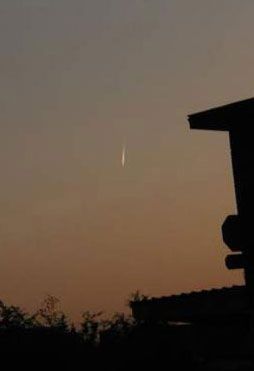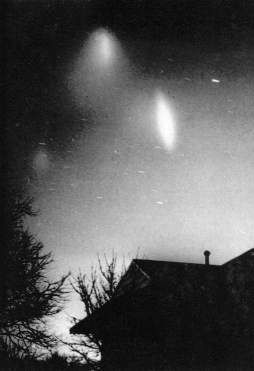Working with eyewitness testimony that is obtained from accidental observers, sometimes years or even decades after the reported event took place, is always a risky enterprise. Many of the reports that were selected when we set out to study the phenomenon appeared to contain dubious or even flawed data. The descriptions of what was observed could often be interpreted in more than one way, and basic information, such as the azimuth and elevation of the phenomenon, were almost never indicated.
As was to be expected, books, magazines and web sites that deal with UFOs, caused the most problems. Not only because many of the anecdotic data published in these publications stem from untrained observers, but also because of the biased way in which reports of unusual sky phenomena are usually dealt with by people in the UFO community. Our many years of experience in this remarkable field of pseudo scientific inquiry has taught us that the people who investigate and publish UFO sightings tend to focus on the most extraordinary details in a narrative, while ignoring those details that may point in the direction of a natural explanation. Moreover, when writing up the results of their investigations, ufologists often resort to a vocabulary that is closely allied to UFO lore and space age terminology. In that way, a pillar-shaped light may soon degenerate into "a disc seen on edge".
Fortunately, not everyone in the UFO field ignores the possibility that even the more convincing UFO reports may have a natural cause. In the night of January 2, 1977 a fiery red, cigar-shaped object was spotted in the sky over Rotterdam, The Netherlands. The object was observed by several independent witnesses from different locations close to the port of the city. One of the observers said that the object looked like "a bright rocket or a luminous cigar with a tail". The same witness added that "it clearly moved and finally disappeared into the clouds". Luckily, that same night, the unidentified "object" was also observed and photographed by UFO author Hans VAN KAMPEN, who immediately identified it as a reflection from one of the flares at the Shell oil plant in the harbour [25]. The movement was probably an illusion caused by clouds moving in front of the reflection. Had VAN KAMPEN not looked out of the window that night, the idea of a gas flame reflecting off clouds as an explanation for these sightings might never have been considered.
One way to find out if reflections from ground-based light sources may have been responsible for a specific sighting, is to use a detailed map of the location and look for oil refineries, chemical works, steel factories or blast furnaces in the direction in which the unknown phenomenon was situated. Aerial imagery, such as the images that can be found on Google Earth, can be of great use here. In two cases, employees at the petrochemical complex in Antwerp assisted CAELESTIA in identifying nocturnal lights by checking if there was an increase in the quantities of gases that were burned off during the sightings. Still, it was only after repeated requests and personal contacts that we were given a quick look at this data. Because of the pollution and the noise they entail, flaring activities are not good for the public image of oil and gas companies, which is why most of them are not keen on sharing this type of information with outsiders.
Another way to try and find confirmation is to check local newspapers or the Internet to see if there was a fire in the direction of the reported phenomenon. The same sources can also tell you if there were special festivities going on at which lightshows may have been used. Night clubs use powerful spotlights frequently, so it may pay off to check the locations of local discos as well.
As for fishing boats with powerful lights, we refer to the previous chapter where a list can be found of the waters in which these boats operate.
How you can contribute to this research project
This project is an ongoing one, and our search for information on this remarkable optical phenomenon still continues.
Personal sightings and sightings published in local publications may be new to us and might be considered for inclusion in the revised catalogue we intend to put together (an earlier attempt to catalogue sightings of reflections in high clouds was abandoned because our case selection was found to be contaminated with too many dubious reports).
Photographs are especially welcome and will be added to our photo collection, a selection of which can be viewed on our picture gallery (please add sufficient background information and state if we can use your images for our web site).
And of course we are also looking forward to receiving expert opinions on the subject which we will be happy to post on our accompanying responses page. So please don't hesitate to contact CAELESTIA if you think you have something to contribute to this research project.
Wim VAN UTRECHT (July 2007)
[25] VAN KAMPEN, Hans, "Nachtelijke lichten boven Nederland" in Aarde & Kosmos, March 1977, pp. 133-134.
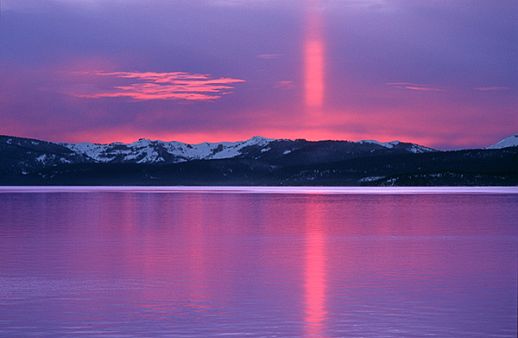
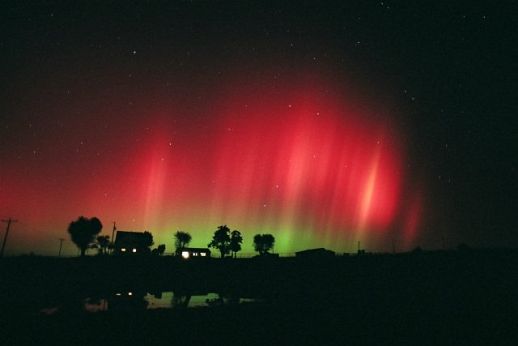
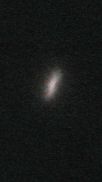 The problem of finding a sure identification for sightings of light pillars is further complicated by the existence of several other sky phenomena that can take the shape of a vertical pillar, a tear-drop or a round patch of light. In reports where date and time are mentioned, the astronomical situation was checked to see if Sun or Moon related optical phenomena, such as moon dogs and sun pillars, could not have created the confusion. Even a crescent moon shining through a cloud layer can look very similar to the phenomenon that we are interested in. Confusion with other nocturnal lights (especially contrails of aircraft, auroral pillars and chemical clouds released by rockets) is also possible, and their presence at the time of the sighting is often difficult, if not impossible, to verify, especially when the incident occurred many years ago.
The problem of finding a sure identification for sightings of light pillars is further complicated by the existence of several other sky phenomena that can take the shape of a vertical pillar, a tear-drop or a round patch of light. In reports where date and time are mentioned, the astronomical situation was checked to see if Sun or Moon related optical phenomena, such as moon dogs and sun pillars, could not have created the confusion. Even a crescent moon shining through a cloud layer can look very similar to the phenomenon that we are interested in. Confusion with other nocturnal lights (especially contrails of aircraft, auroral pillars and chemical clouds released by rockets) is also possible, and their presence at the time of the sighting is often difficult, if not impossible, to verify, especially when the incident occurred many years ago.
